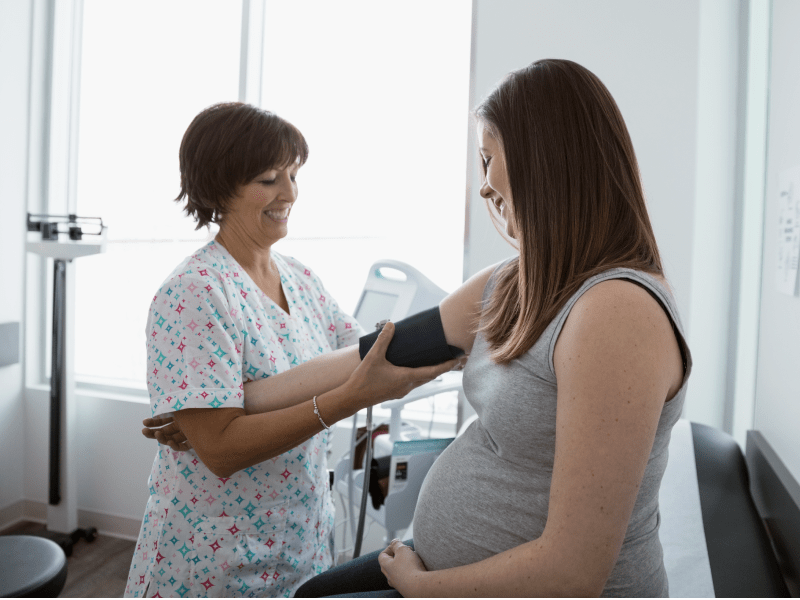Why do IVF pregnancies with frozen embryos increase preeclampsia risk?
By American Heart Association News

For women who use in vitro fertilization to get pregnant, particularly those who find success with frozen embryo transfers, recent studies have found they have an increased risk of preeclampsia, a pregnancy complication and serious blood pressure condition.
Now, academic researchers may have uncovered why.
"Many have reported this higher incidence of preeclampsia in those undergoing frozen embryo transfer, but without any explanation. Now we think we have an explanation – they have no corpus luteum," said Dr. Kirk Conrad, co-senior author of the study published Monday in the American Heart Association journal Hypertension.
The corpus luteum is a collection of cells that forms in the ovary after ovulation. It produces multiple hormones that help both maintain pregnancy and the body's adjustment to it.
Women who undergo frozen embryo transfer – an increasingly used fertility option – usually do so under a "programmed cycle" involving medical suppression of reproductive hormones, which ultimately prevents the corpus luteum from developing.
One way to prevent this from happening is for women to instead undergo a "modified" natural cycle that would allow a corpus luteum to develop, said Conrad, a professor in the University of Florida's departments of physiology and function genomics and obstetrics and gynecology.
Researchers found that preeclampsia rates reached 12.8 percent in women receiving frozen embryos under a programmed cycle without a corpus luteum compared with 3.9 percent among women who had frozen embryo transfers under a modified natural cycle with a corpus luteum.
Women without a corpus luteum lacked relaxin, one of the hormones it produces during pregnancy. The hormone helps relax blood vessels, among other things, said Dr. Afshan Hameed, a cardiologist and high-risk obstetrician who was not associated with the study.
Women who lack relaxin "are at high risk because their blood vessels may remain stiff as shown in the study, particularly the aorta," said Hameed, a professor of cardiology and obstetrics and gynecology at the University of California, Irvine.
"The researchers hypothesize that relaxin may play a role in those stiff vessels that are (common) earlier on in pregnancy, and that translates to preeclampsia later on in the pregnancy," she said. "But there are many other hormones present in the system that cause the blood vessels to constrict or dilate, and we don't have any data on those vasoactive type of hormones in this study."
Conrad agreed the study only provides an association between a missing corpus luteum, absent relaxin and increased preeclampsia, not a direct link. "The corpus luteum makes a lot of products that we don't know about that may also be important," he said.
Even so, Conrad called the findings "compelling."
He said the study's co-senior author Dr. Valerie Baker is designing a randomized clinical trial to examine frozen embryo transfers in a natural or modified natural cycle with a corpus luteum versus a programmed cycle with no corpus luteum.
Fresh embryo transfers come with a greater risk for babies with low birth weight and who are small for their gestational age, Conrad said. Frozen embryo transfers seem to lessen those risks – but then add a higher risk for preeclampsia.
"I think the way to address this whole problem would be to do the frozen embryo transfer in a modified natural cycle or eventually replace the missing corpus luteal factors," he said. "It would be a nice solution but clearly needs (more research) before anything can be done."
If you have questions or comments about this story, please email [email protected].





